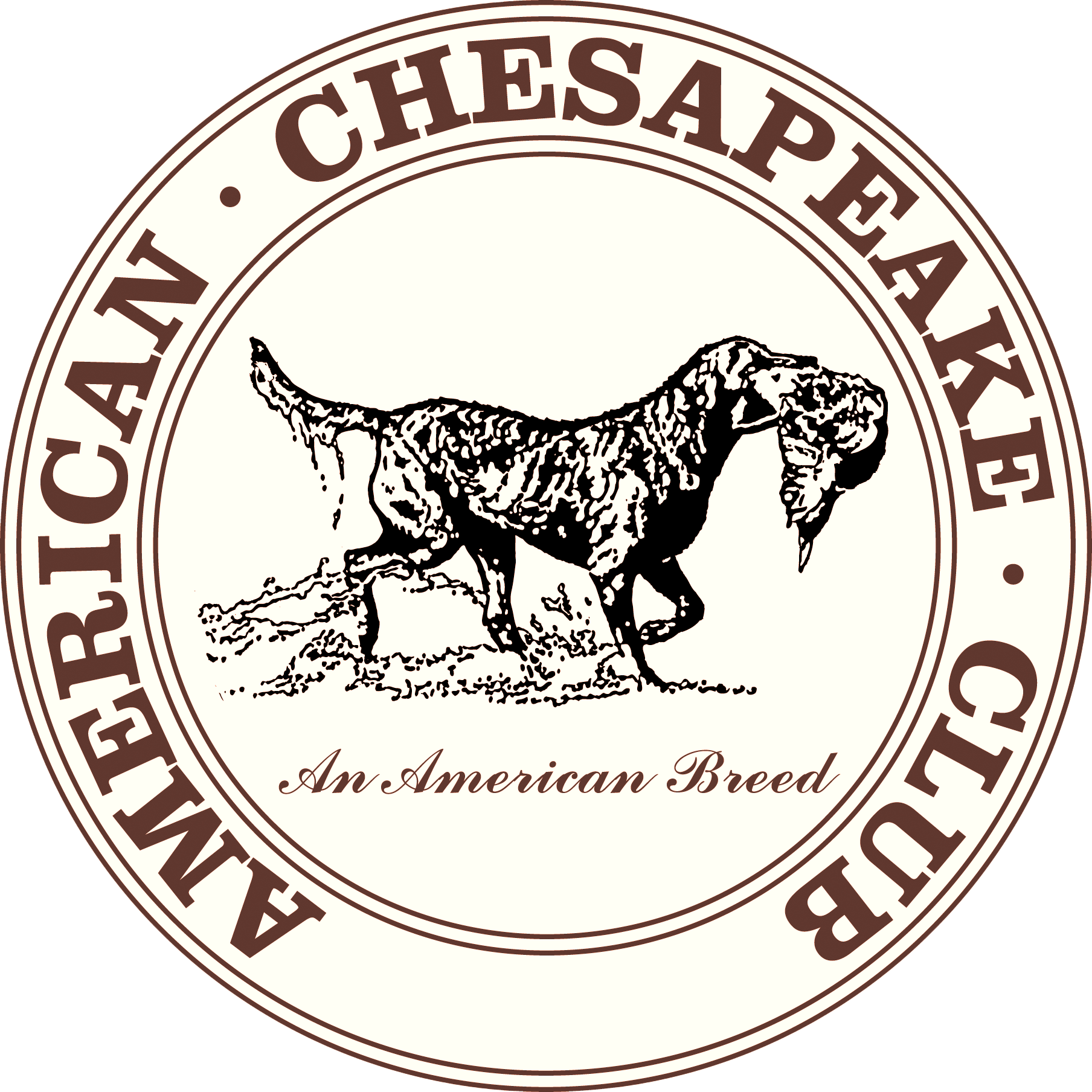Size Matters
At a long-ago national specialty, the Intersex judge told a memorable story at the dinner banquet after the event. When reviewing the Breed Standard on the flight to the specialty, she noted the words “moderate” (2) and “medium” (14) appear in the Standard sixteen times. Looking further, versions of “power” appear eight times while versions of “strong” appear five times (three more if “no weakness” is included). The Breed Standard for the Chesapeake Bay Retriever emphasizes an animal of moderate size with a powerful build. These characteristics are not mutually exclusive, although larger size is often confused with more power. Smaller stature does not necessarily mean weaker structure, just as bigger size does not necessarily mean stronger or better. Moderately sized dogs, correct to the standard, with proper muscle, balance, and soundness are best suited to have the agility, ability and endurance to perform the job they are bred for.
The official Breed Standard clearly states: “Oversized or undersized animals are to be severely penalized.” Smaller Chesapeakes tend to be penalized more often under this directive than larger. Often in a group of large or even oversized dogs, a smaller sized but more correctly built dog can get lost or even dismissed from consideration whether in a conformation ring or breeder evaluation. To paraphrase the sleepy break-in artist from the bedtime story, a Chesapeake should be not too big, not too small, but just right.
The Standard does give specific height and weight parameters pertaining to size, but no disqualification for either. “Height: Males should measure 23 to 26 inches; females should measure 21 to 24 inches. Weight: Males should weigh 65 to 80 pounds; females should weigh 55 to 70 pounds.” With the absence of DQs concerning height or weight, these measurements should be used as a guideline but not hard and fast requirements. Overall, it is most important the dog be balanced in regards to both height and weight while exhibiting characteristics definitive to the breed.
According to the Standard: “In body, the Chesapeake is a strong, well balanced, powerfully built animal of moderate size and medium length in body and leg, deep and wide in chest, the shoulders built with full liberty of movement, and with no tendency to weakness in any feature, particularly the rear. The power, though, should not be at the expense of agility and stamina. Size and substance should not be excessive as this is a working retriever of an active nature.” Often, oversized or “excessive” dogs without correct structure and soundness cannot work as well either during the hunting day or over time as a dog moderate in size but with those much-desired breed characteristics. Practically, an oversized Chesapeake can be harder to work with in limited spaces such as a blind or boat, while an undersized one might find it harder to break ice or carry large birds.
Again, from the Standard: “The breed’s characteristics are specifically suited to the Chesapeake to function with ease, efficiency and endurance.” The Chesapeake Bay Retriever is ultimately about working and hunting in all conditions, all day long, all year round. It is a moderate, powerful, well balanced, agile, and active breed. Structure and soundness are more essential than overall size, large or small, to not only enable them to perform the job they are bred for, but be healthy, happy family companions true to breed type.
ACC Judge & Breeder Education Committee (2021) – Angie Cox, Gale Frana, Polly Henshaw, Betsy Horn Humer, Kathy Luthy, Melissa Schumann

